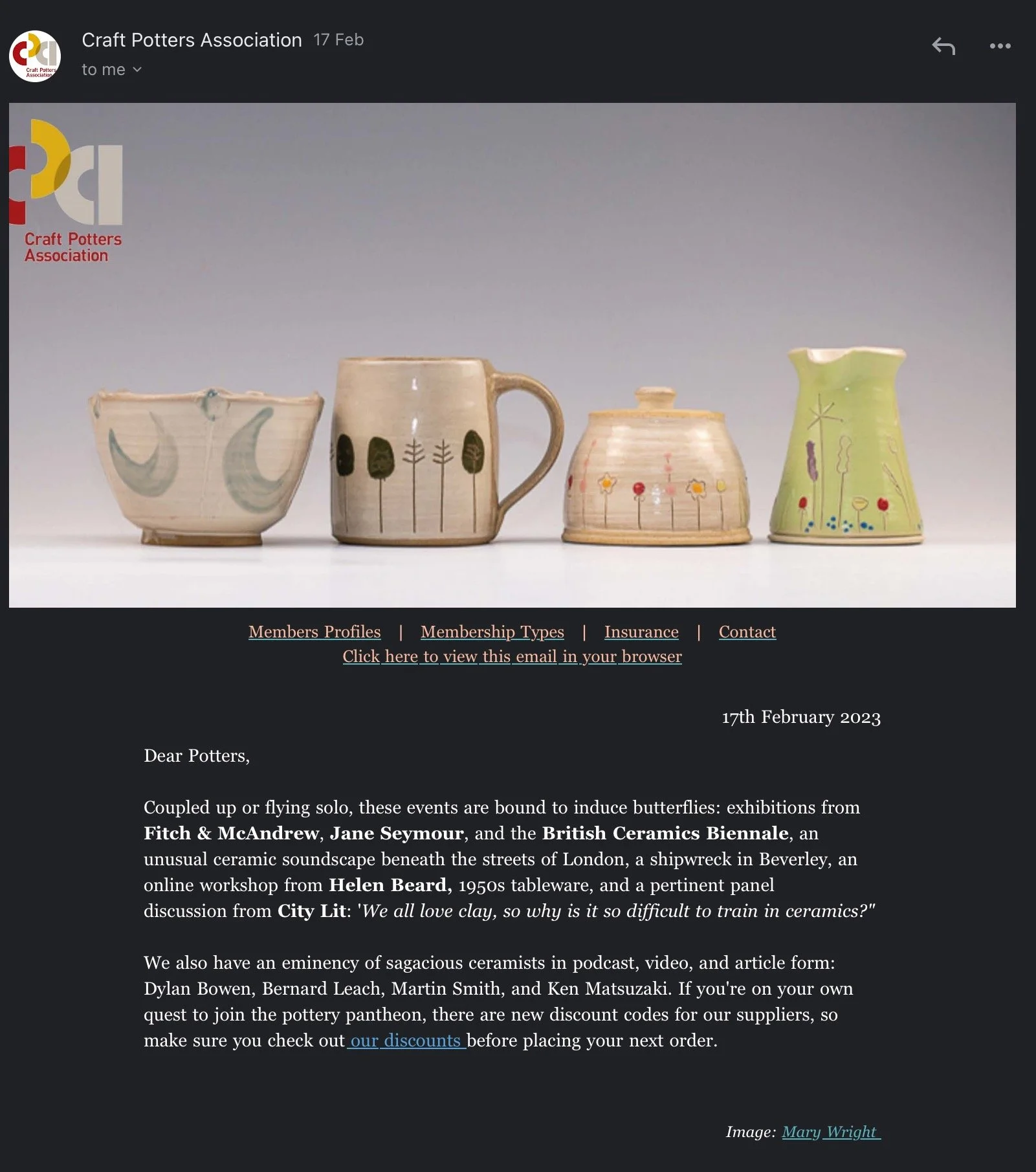Artist Statement
I work in stoneware; it is strong, durable and ideal for everyday use. My work is thrown then decorated with coloured slips and underglazes. I use an electric kiln.
I aim to retain the fluidity of the clay in my finished pieces. Use of brushes to apply slips and colours help to accentuate the plasticity of the raw material.
The Buncheong tradition of Korean pottery helps to inform my ceramics; in addition, I draw inspiration from textile patterns and the natural world.
My work is placed in the long tradition of integrating Eastern and Western pottery dialogues for a contemporary audience.
Tell us about your pottery journey so far?
Making pottery is my second career. Things really took off when I built my studio in my garden in Sevenoaks in 2009. Until then, I had been attending weekly evening classes after my day job as a Clinical Psychologist. However, after I had my own space, and as my children have grown up, I have been focussing more and more on my pottery practice.
I have always been a creative person and as a child I worked with textiles spending my free time sewing my own clothes and making patchwork quilts as well as dabbling in jewellery and woodwork with my Dad. Textile patterns sometimes influence the patterns that I have created for my ceramics.
How is your work made?
All of my pots start their life by being thrown by hand on the wheel. I then use slip (which is a liquid clay) in different ways to decorate my pots. For my some of collections, I stain this slip different colours and use a technique called slip and sgraffito to add colour and etch through with a pin to the clay behind, creating the design – like drawing with a pen. My newer pots are sometimes altered on the wheel and have a white slip with underglaze decoration brushed on them.
After a biscuit firing and the application of a food safe transparent glaze, I fire my pottery to a stoneware temperature – around 1260 ⁰C. This makes them really strong and durable which is ideal for using in the home.
What are you working on at the moment?
I have become aware more recently of the qualities of the material, clay, that I work with. When it is wet and on the wheel, it is plastic and slowly becomes less and less malleable as first it dries out, and then is fired to become like stone.
For me, the idea of fluidity of the wet clay is very interesting and relates to the form or shape of the pot itself. I really want people to focus on the curve of the pot, the feeling of volume inside the pot itself and the marks that I make while the clay is in this plastic state.
When I brush on the slip, I am very deliberately wanting people to see the detail of the brush strokes. This idea comes from Korean Buncheong ceramics which uses a dark clay and a white slip over the top. I further want to accentuate the movement and feeling of fluidity by using really big brush strokes with underglaze colours.
In the press
Country Homes and Interiors February 2020
Inside Kent, August 2024
Country Living February 2022 Emporium pages
Ceramic Review's Instagram feed May 2023
Craft Potters Association Members Bulletin, February 2023






